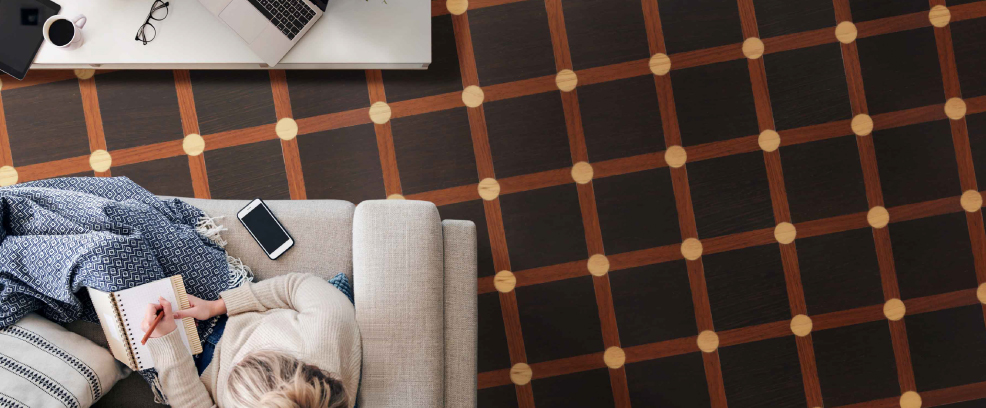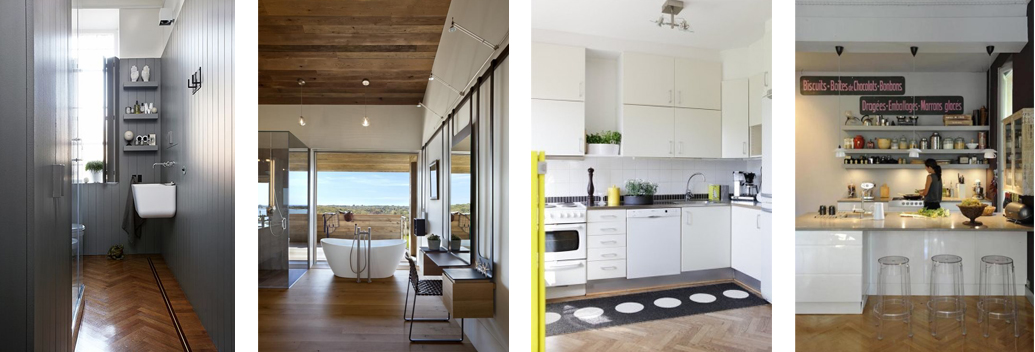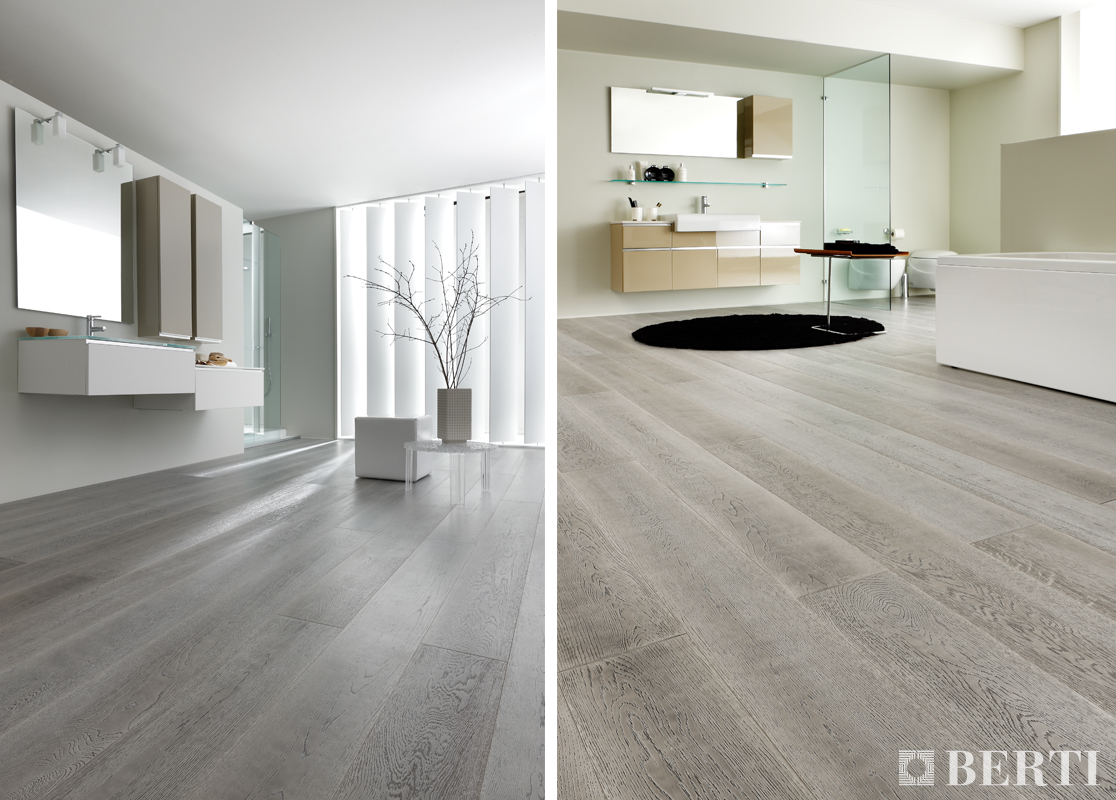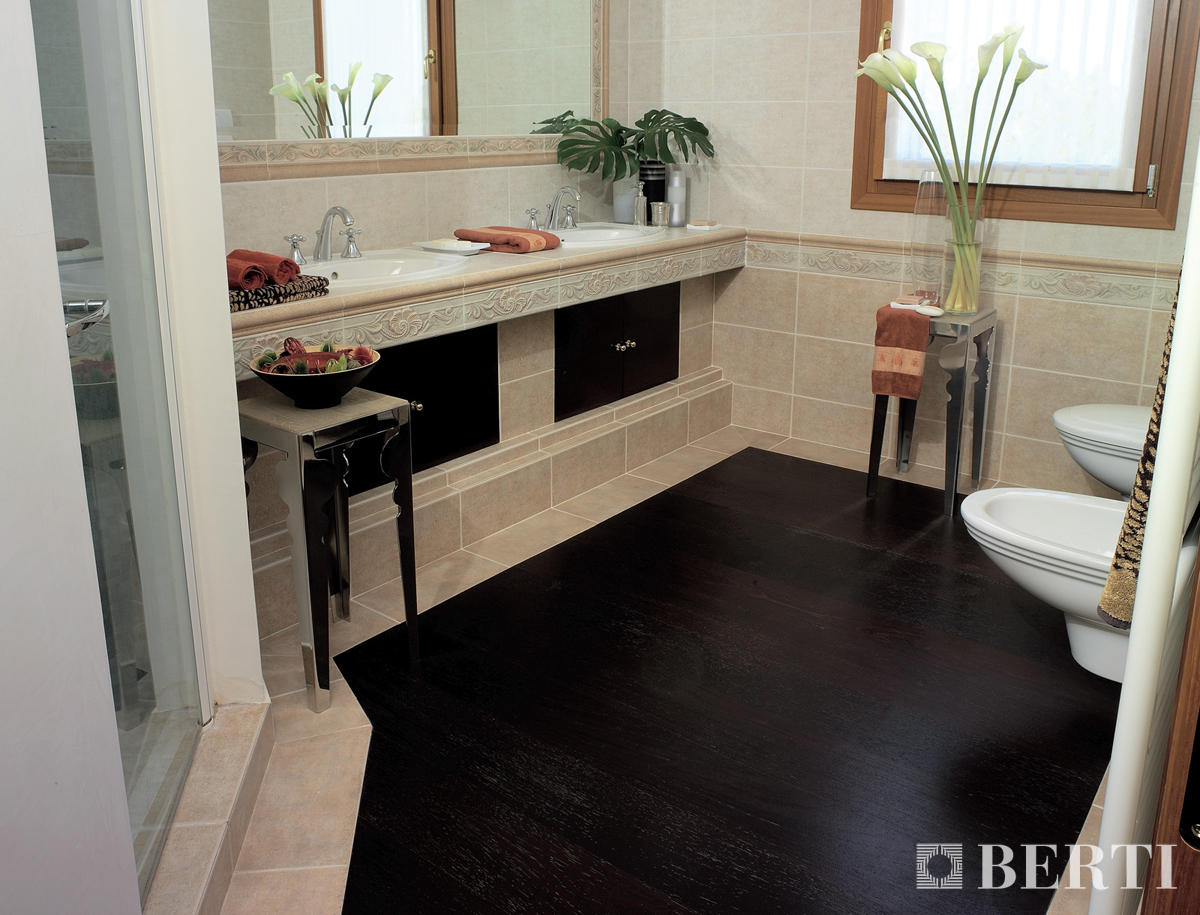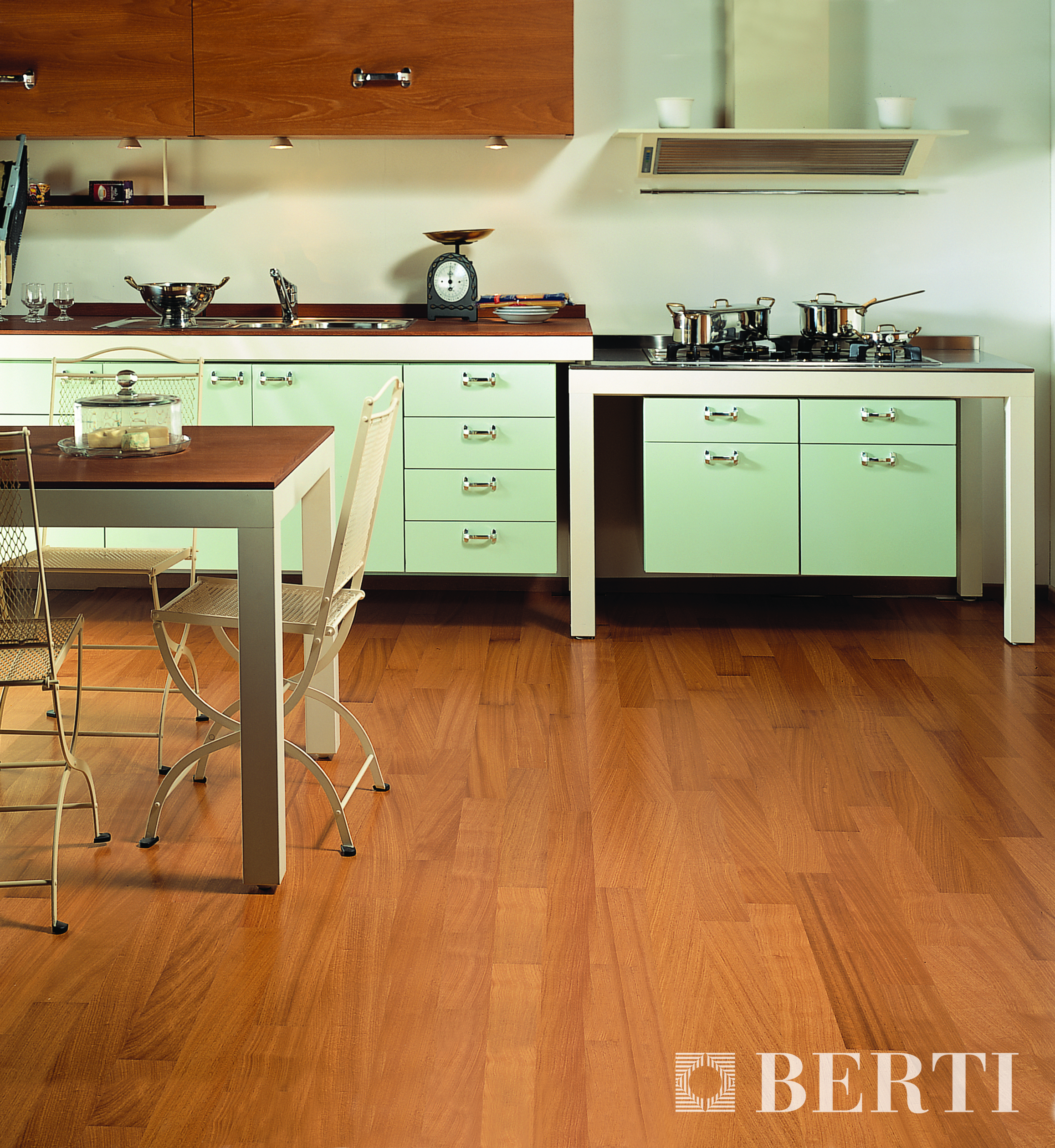Anyone who loves parquet would like to lay it in every room of their home, but there are often conflicting considerations: on the one hand, the wish for continuity in interior design and on the other the fear that this material is too delicate or unsuitable for rooms like the bathroom and kitchen, where the “water, humidity and temperature threat” is always lurking.
Berti Tips comes to your aid to tackle this very question: can I lay parquet absolutely everywhere? Can I lay parquet in my bathroom? What do I do about the reactions between water and wood?
Let’s start from a really simple consideration, so we don’t cross our bridges before we come to them: water may accidentally splash onto the floor, but if it is dried up with the same speed as on any ordinary tiles, there will be no problems at all. Wood’s absorption times are long, more than enough to allow splashes to be dried up without undue haste or anxiety.
So we can say without a shadow of a doubt that there are absolutely no contraindications to the use of a parquet floor in the kitchen or bathroom. If it is not left to stand, water does not damage parquet.
It is advisable to take care when selecting the species of wood, using the timbers that show the greatest stability if they come into contact with water. Doussiè, Merbau, Iroko and Teak are all excellent in this respect. If you choose Oak, some caution is advisable, since if Oak parquet comes into contact with water it tends to form blackish stains due to the large amounts of tannin contained in this species.
In bathrooms in particular, it is always best to lay the parquet by gluing: this will ensure that any water present does not seep into the interface between the parquet and the screed. Another useful hint is to apply a little silicone in the gap between the wall and the parquet. Since this material is very elastic, it provides a perfect seal while still allowing the parquet boards free to move horizontally.
It will definitely be better to choose a varnished parquet, since unlike an oiled parquet it is not absorbent and can easily be cleaned with a damp cloth.
One factor to be carefully assessed is the level of humidity in the bathroom: this poses a serious threat, even though it is less obvious than drips or water on the surface.
In any case the golden rule to enable you to use your bathroom with confidence is to look after your parquet floor properly, always opening the windows for ventilation after using showers or similar fixtures to allow any moisture deposited inside the room to escape, so that it cannot cause damage to the floor covering.
In the kitchen, on the other hand, parquet made from harder woods is advisable, since in rooms of this kind there is a much greater risk that heavy items (such as saucepans and cutlery) may be dropped onto the floor. It is therefore best to reduce the risk of dents by choosing timbers such as Doussiè, Iroko, Oak, Ash and Merabau.
Follow Berti’s recommendations to enjoy your parquet in complete confidence, in the bathroom, in the kitchen, and throughout your home!
Print
